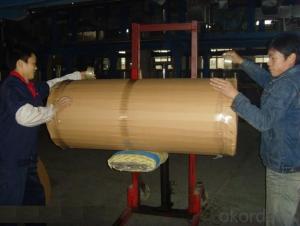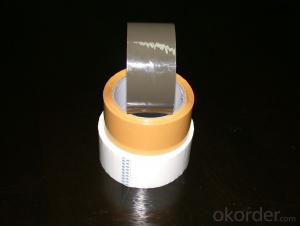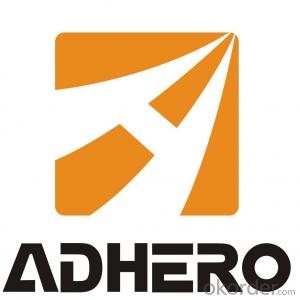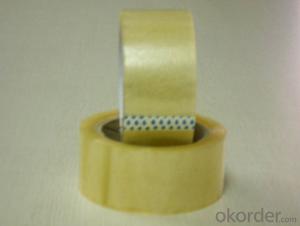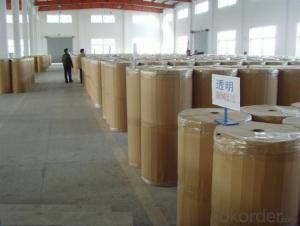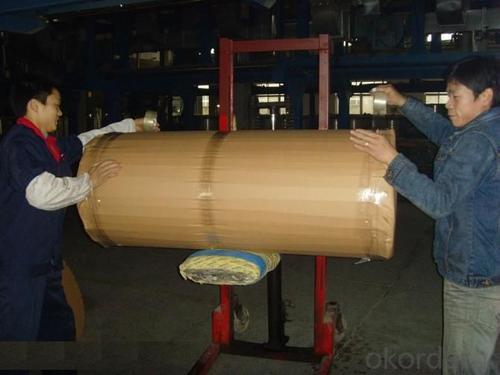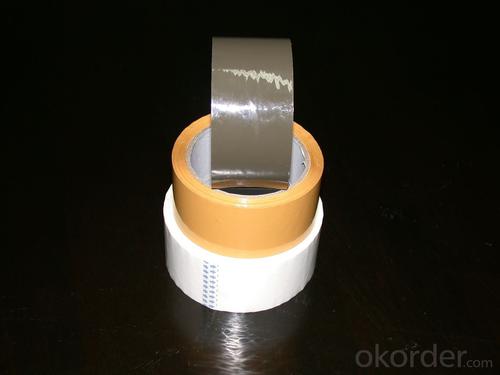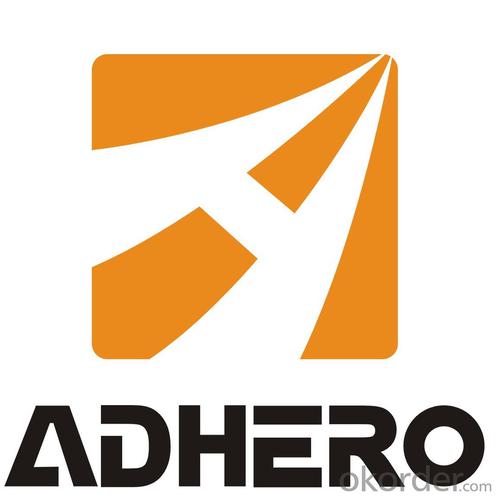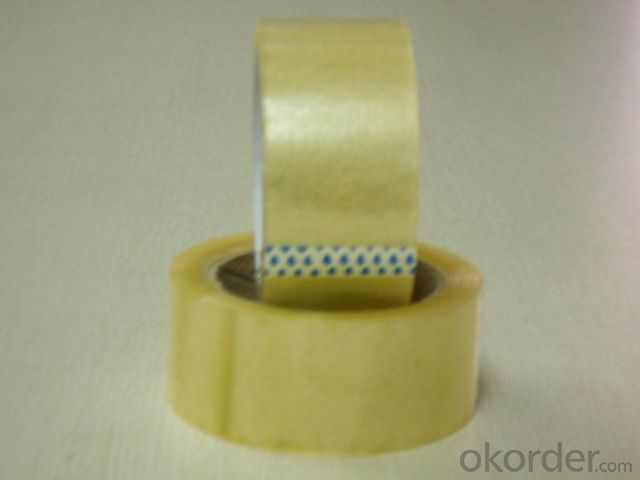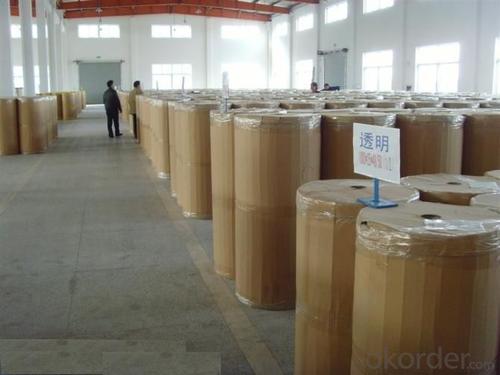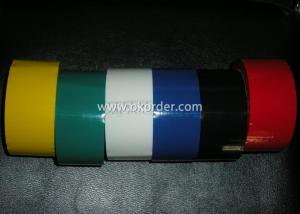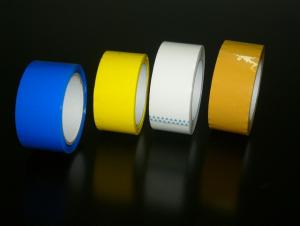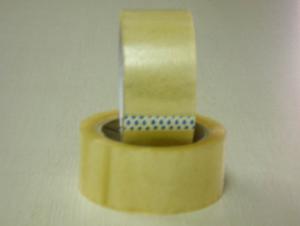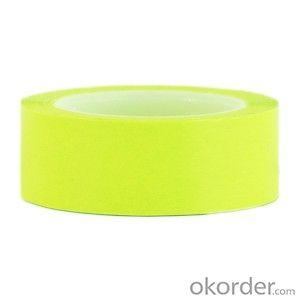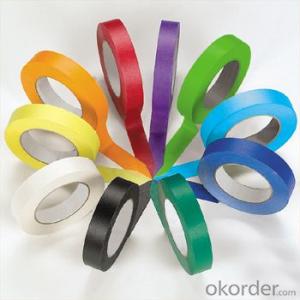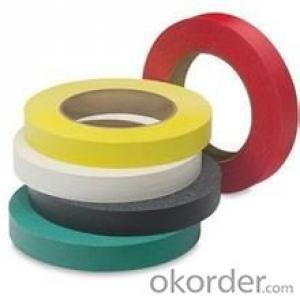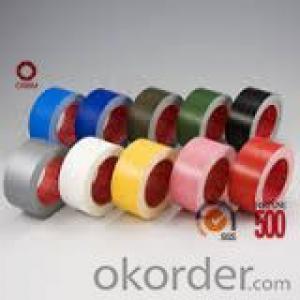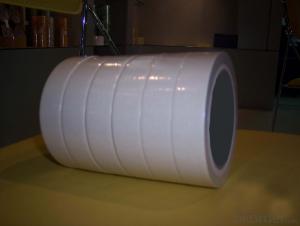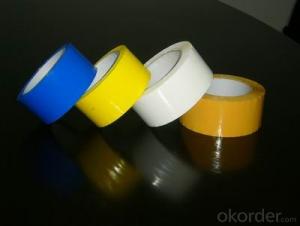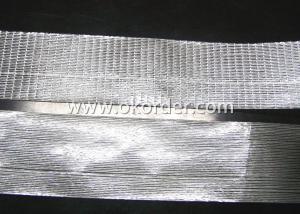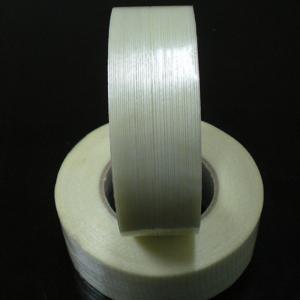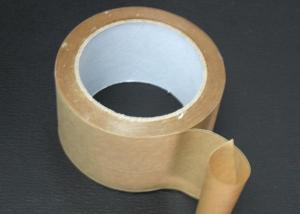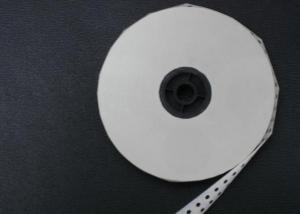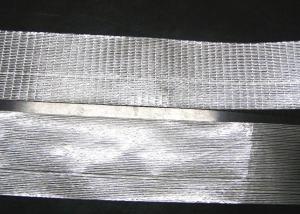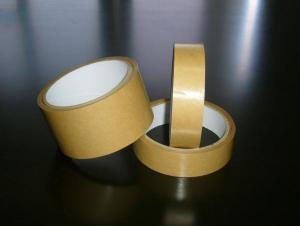Wet Packaging Masking Tape Cloth Tape Foam Tape Aluminum Foil Tape Industry Tape
- Loading Port:
- Guangzhou
- Payment Terms:
- TT OR LC
- Min Order Qty:
- 3000 m²
- Supply Capability:
- 10000000 m²/month
OKorder Service Pledge
OKorder Financial Service
You Might Also Like
CONSTRUCTION:
Carrier: BOPP film
Adhesive: Water based acrylic adhesive.
TYPICAL PHYSICAL PROPERTIES:
Total Thickness (adhesives + carrier): 42 ± 1 um
Adhesive thickness:20 ± 1 um
Initial Tack: ³ 23#
180O Peel Adhesion (to steel): ³ 6.52 N /25mm
Holding Power: ³ 31 hrs
PACKING:
Core I.D.: 3” (76mm±1)
Jumbo Roll:1280mm x 4000m
Cut Roll: As per customer’s requirements
Application:
Carton sealing & packing, Light duty packaging, bundling, holding, and other office & household use.
REMARKS:
1. The data above are typical results and subject to change without notice.
2. Tolerance: Weight and Thickness: ±10%; Width: ±3mm;
Length: Cut Roll & Log Roll ±0.3m, Jumbo Roll ±0.5%.
3. The products should be stored at room temperature and be kept away wet and/or heat source.
4. It is essential, as with all pressure-sensitive tapes, that the surface to which the tape is applied must be clean, dry, and free of grease and oil.
5. The users should take test and do trial-application on the above products before coming into application so as to witness and ensure suitability for their special purpose and technique.
TAPE FAQ
What is the range of your products?
So far, we manufacture various kinds of double sided adhesive tape, masking tape, kraft tape and BOPP packing tape. To better meet your needs, we can also source other adhesive tapes for you if it is appropriate to do so.
What's the lead time for delivery?
We ensure you a prompt delivery of the goods. We do not stock any of the goods. The production cycle time of 1*20FCL is 2-3 weeks.
How many carriers does your double sided adhesive tapes have?
There are many carriers that our double sided adhesive tapes based on, which are tissue, PET, BOPP, PE foam, EVA foam.
Can Adhero accept the cooperation way of OEM?
Upon receipt of formal authorization, we can accept OEM processing.
What are the international commodity codes for these products?
HS Code: 48231900.
Are you offering only jumbos rolls or slit rolls as well?
We offer Jumbos, logs, and slit rolls. All different sizes are available.
What are the temperatures resistances of your masking tape?
we have two general kinds of masking tapes separately for general purpose 60°C and high temperature 100°C to 160°C.
Are you a manufacturer or just a trader?
We are a professional manufacturer.
How about the quality?
The quality is very good. We have large and advanced product line.welcome to visit our company.

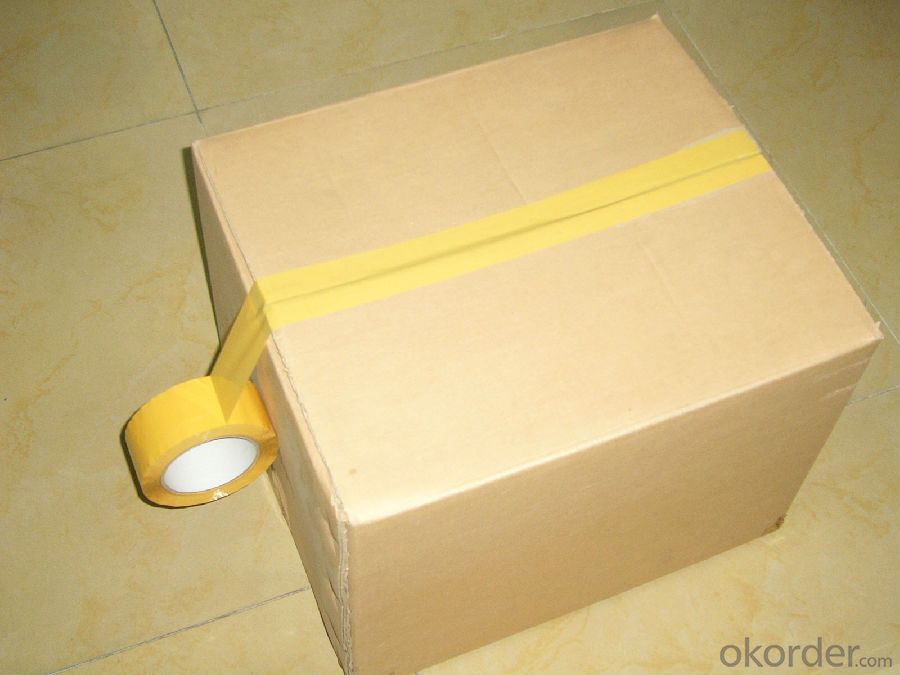
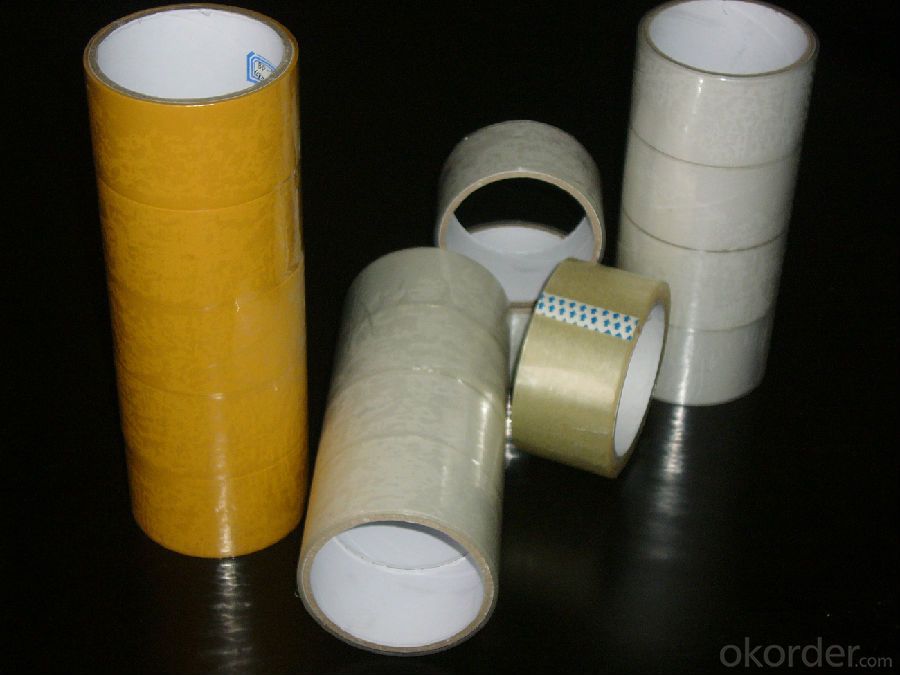
- Q: What is the difference between acrylic and hot melt adhesive for packaging tape?
- Packaging tape commonly utilizes two types of adhesives: acrylic and hot melt. These adhesives possess distinct characteristics that set them apart. A significant disparity lies in their bonding strength. Hot melt adhesive boasts exceptional bonding strength, making it ideal for heavy-duty applications. It creates a robust and durable bond that can withstand rigorous handling and varying temperatures. Conversely, acrylic adhesive typically offers a lower level of bonding strength in comparison. While still suitable for most general packaging requirements, it may not be the best choice for heavy or bulky items. Another distinction can be found in the application process. Hot melt adhesive is applied in a molten state and solidifies once cooled. Typically, it is dispensed using a hot melt glue gun or applicator. The quick setting time of hot melt adhesive allows for swift packaging operations, making it popular in high-volume settings. On the other hand, acrylic adhesive is applied in a liquid form and requires some time to cure and establish a strong bond. It can be applied using a hand dispenser or tape gun, and optimal adhesion often necessitates some pressure. Moreover, hot melt adhesive demonstrates excellent adhesion to a wide array of surfaces, including cardboard, plastics, and metals. Its versatility allows for usage with various packaging materials. While acrylic adhesive also adheres well to different surfaces, it may not exhibit the same level of compatibility with certain low-energy surfaces, such as polyethylene or polypropylene. Furthermore, temperature resistance is an essential factor to consider. Hot melt adhesive performs admirably in both high and low temperatures, maintaining its bonding strength. It can endure freezing temperatures and heat without compromising its adhesive properties. Acrylic adhesive, while generally offering good temperature resistance, may not be as effective in extreme conditions, particularly at very high or low temperatures. In conclusion, the primary disparities between acrylic and hot melt adhesives for packaging tape lie in bonding strength, the application process, surface compatibility, and temperature resistance. While hot melt adhesive provides superior bonding strength, rapid setting time, and excellent temperature resistance, acrylic adhesive offers versatility, ease of application, and good adhesion to most surfaces. The choice between the two depends on specific packaging needs, materials used, and environmental conditions.
- Q: Is packaging tape resistant to moisture or humidity?
- Indeed, packaging tape typically exhibits resistance to moisture and humidity. The majority of packaging tapes incorporate materials like polypropylene or acrylic, renowned for their capacity to endure moisture and humidity. These tapes are purposefully crafted to establish a robust seal on boxes and packages, effectively thwarting the infiltration of water or moisture. Furthermore, packaging tapes frequently boast an adhesive that is meticulously formulated to retain its stickiness, even amidst humid conditions. Nevertheless, it is crucial to acknowledge that the extent of resistance may fluctuate depending on the precise type and caliber of packaging tape employed.
- Q: Can packaging tape be recycled?
- Yes, packaging tape can be recycled. However, it is important to remove the tape from the packaging material before recycling.
- Q: Can packaging tape be used for sealing packages with automotive parts or accessories?
- Indeed, the utilization of packaging tape is applicable for the sealing of packages encompassing automotive parts or accessories. With its purpose in securely sealing packages, packaging tape effectively ensures the cohesion of packages containing automotive parts or accessories. Through its robust adhesive bond, it guarantees that the package remains sealed throughout transportation or storage. Moreover, packaging tape commonly exhibits resistance to moisture, a crucial quality when shipping automotive parts or accessories susceptible to water damage.
- Q: Can packaging tape be used on all types of surfaces?
- When it comes to packaging tape, it generally works well on a wide variety of surfaces. However, it is crucial to take into account the specific characteristics of the surface. Packaging tape is specifically designed to stick to different materials like cardboard, paper, plastic, and even certain metals. Its common uses include sealing boxes and securing packages. Nevertheless, there are surfaces that may not be suitable for packaging tape, particularly those that are extremely smooth, oily, or coated with a non-stick substance. In such instances, the tape might not stick properly or could easily peel off. It is always recommended to test the tape on a small and inconspicuous part of the surface before applying it extensively. Furthermore, there are various types of packaging tapes available, each with its own unique adhesive properties. Therefore, it is crucial to select the appropriate tape for the intended surface in order to ensure proper adhesion and durability.
- Q: How is packaging tape different from regular tape?
- There are several ways in which packaging tape differs from regular tape. To start, packaging tape is specifically designed for heavy-duty use and is made to securely seal boxes and packages for shipping or storage. On the other hand, regular tape is generally used for lighter tasks like gift wrapping or arts and crafts. In addition, packaging tape is typically wider and thicker than regular tape, providing better strength and durability. This ensures that packages stay securely sealed during transportation and handling, reducing the risk of damage or tampering. Moreover, packaging tape often has specific features that regular tape may lack. For instance, some packaging tapes are water-resistant or have reinforced fibers for added strength. These features are crucial in protecting packages from moisture, preventing easy tearing of the tape, and providing extra security for valuable or fragile items. Finally, packaging tape often comes in larger rolls or dispensers, allowing for efficient and continuous application. This is particularly important when sealing multiple packages or dealing with larger items. Conversely, regular tape is typically available in smaller rolls or individual pieces, making it more suitable for smaller-scale tasks. To summarize, packaging tape differs from regular tape in terms of its intended use, strength, durability, specific features, and size options. It serves the purpose of providing a reliable and secure seal for packages during transportation and storage, making it an essential tool in the logistics industry.
- Q: Does packaging tape come in different thicknesses?
- Yes, packaging tape does come in different thicknesses.
- Q: Does packaging tape come in different materials for specific applications?
- Yes, packaging tape does come in different materials for specific applications. One common type of packaging tape is made of polypropylene, which is a versatile material suitable for general-purpose packaging. It is strong, durable, and resistant to moisture and temperature changes, making it suitable for a wide range of applications. However, for more specialized uses, different materials may be needed. For example, if you are packaging items that require extra security or tamper-evident features, you may opt for security tape. This type of tape is often made of a thicker and stronger material, such as polyester or reinforced paper, and is designed to leave a visible mark or message when tampered with. In certain cases, you may need to use packaging tape that is specifically designed for use in extreme temperature conditions. For instance, if you are shipping goods that will be exposed to freezing temperatures, you may need to use freezer-grade packaging tape that remains adhesive and effective in low temperatures. Similarly, some applications may require tape that can adhere to difficult surfaces like corrugated cardboard or recycled materials. In such cases, you may choose a packaging tape with aggressive adhesive properties or one that is specifically formulated for adhesion on challenging surfaces. Additionally, there are also eco-friendly options available for those who prioritize sustainability. Environmentally friendly packaging tapes are often made from renewable or recycled materials and use non-toxic adhesives. Overall, the choice of packaging tape material depends on the specific needs of the application, such as security, temperature resistance, surface compatibility, or environmental considerations. It is always important to select the appropriate tape to ensure the safe and secure packaging of your items.
- Q: What are the benefits of using transparent packaging tape?
- The benefits of using transparent packaging tape include clear visibility of the contents of the package, easy identification of any tampering or damage, professional appearance, and the tape's durability and strength for securing packages effectively.
- Q: What are the common color options for packaging tape?
- Packaging tape manufacturers and the intended use influence the range of color options available. Nevertheless, clear, brown, white, and tan are among the most frequently found colors. Clear tape is transparent, allowing visibility of package contents. Brown or tan tape, often referred to as brown tape, is widely chosen for its strong and secure sealing capabilities. White tape is commonly used for labeling, as it enables easy writing or printing of information. Additionally, packaging tape comes in various other colors, such as red, blue, green, and yellow, which can serve purposes like color-coding or enhancing visual appeal. Ultimately, the choice of packaging tape color is determined by personal preference, branding requirements, or specific organizational needs.
Send your message to us
Wet Packaging Masking Tape Cloth Tape Foam Tape Aluminum Foil Tape Industry Tape
- Loading Port:
- Guangzhou
- Payment Terms:
- TT OR LC
- Min Order Qty:
- 3000 m²
- Supply Capability:
- 10000000 m²/month
OKorder Service Pledge
OKorder Financial Service
Similar products
Hot products
Hot Searches
Related keywords
